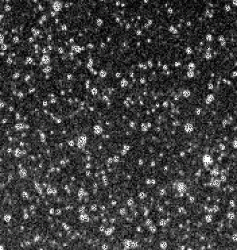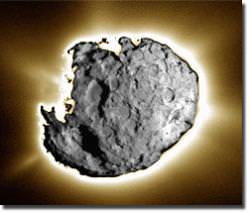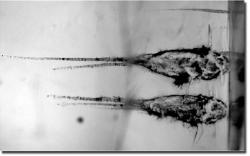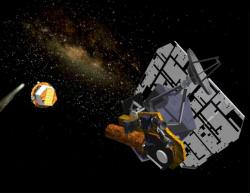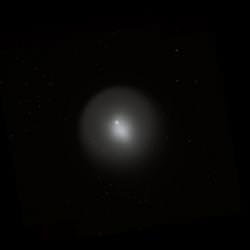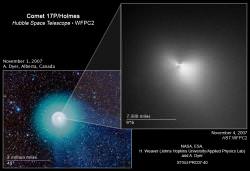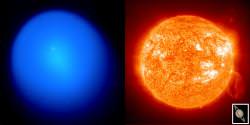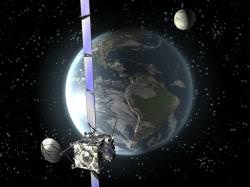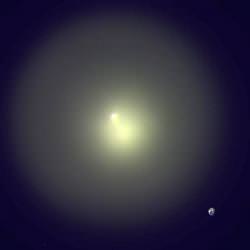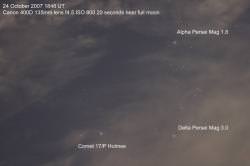There are just so many ways the Universe is out to get us. Astronomers have already considered the threat from our Sun’s orbit around the center of the Milky Way. When our Sun rises up out of flat plane of the Milky Way, it appears we might be less protected from intergalactic radiation and cosmic rays. Well, it looks like passing through the middle of the galactic plane might have its own share of risks: an increased number of comets might be hurled towards the Earth because of gravitational interaction with the densest parts of our galaxy.
Researchers at the Cardiff Centre of Astrobiology have built a computer model of the Solar System’s journey around the Milky Way. Instead of making a perfectly flat orbit around the galaxy’s centre, it actually bounces up and down. At times it can rise right up out of the galactic plane – getting 100 light years above – and then dip down below it. They calculated that we pass through the plane every 35 to 40 million years.
And this time period seems to match dangerous periods of impacts on Earth. According to the number and age of craters on Earth, we seem to suffer increased impacts every 36 million years. Uh oh, that’s a match.
In fact, one of these high points of comet activity would have been 65 million years – the same time that an asteroid strike wiped out the dinosaurs.
And here’s the bad news. According to their calculations, the Solar System will be passing through the galactic plane in the near future, and should see an increased risk of impact. Our risk of impact could increase 10-fold.
There might be a silver lining to the bounce, though. The impacts might have helped life spread across the galaxy.
While the “bounce” effect may have been bad news for dinosaurs, it may also have helped life to spread. The scientists suggest the impact may have thrown debris containing micro-organisms out into space and across the universe.
Centre director Professor Chandra Wickramasinghe said: “This is a seminal paper which places the comet-life interaction on a firm basis, and shows a mechanism by which life can be dispersed on a galactic scale.”
Here’s more info on the story from Bad Astronomy.
Original Source: Cardiff News Release


